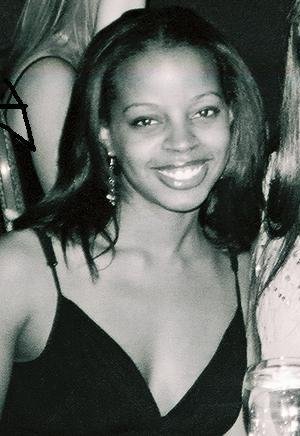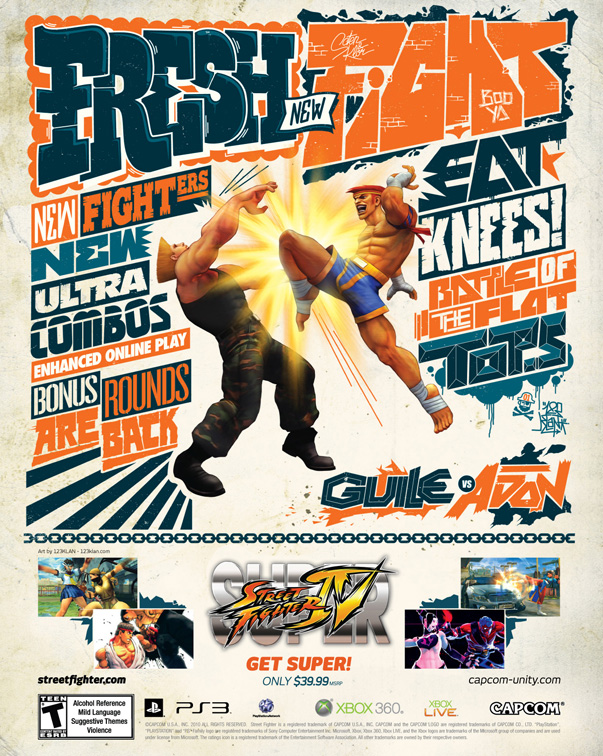“When Street Fighter returned after a ten-year hiatus with Street Fighter IV in February 2009, we knew that there was built up demand in the marketplace, but we were unsure of how big that demand actually was. In the time since Capcom had released a new Street Fighter title, Street Fighter remained a part of gaming and pop culture as fighting tournaments still featured older Street Fighter games and spoofs of the brand such as ‘Street Fighter: The Later Years’ continued to be produced. The community kept the brand alive and for those of us working on the title, the marketing campaign for SFIV was all about fun, quite a bit of nostalgia and rewarding the community that had kept the Street Fighter brand relevant.”
 Emily Anadu, seen here clearly not practicing her “Hadoken!”
Emily Anadu, seen here clearly not practicing her “Hadoken!”
“From the time we announced Street Fighter IV in October of 2007 to its launch over 15 months later, we knew that we had a lot to prove as we were aiming to get back to the kind of frenzy that Street Fighter II had created at the height of its popularity. From a development standpoint, this meant bringing back some of the favorite and iconic characters such as Ryu and Chun-li and that the game must ‘feel’ like SFII so that new gamers would enjoy it while the people that had grown up with SFII would feel like they were back at their local 7-11 playing their favorite game. In order to show people how the game felt, we had to get the game in the hands of as many fans as possible at industry events and our own ‘Fight Clubs.’ These Fight Club events, modeled after the movie by the same name, were all about getting gamers together in no frills/ unexpected locations to play SFIV long before the game’s release. From a warehouse in downtown LA to a bodega basement in Brooklyn, these underground events were sometimes only announced a day in advance yet would still draw crowds of hundreds. The collective efforts of product development and marketing culminated in a launch event that drew over 4,000 fans, sales of over 500,000 units within the first few days of release, and one of the highest Metacritic scores of 2009.”
“With the current release of Super Street Fighter IV, we knew that we would face challenges. Would fans think that the title was justified so soon after the release of Street Fighter IV From a marketing communication standpoint what would we say to the fans that would make them come back to the franchise again I loved the advertising that was done for Street Fighter IV in early 2009. The ads featuring iconic character imagery along with a call to action of ‘Let’s Do This’ and lines such as ‘Hit It Again For The First Time’ and ‘Return Of The Beatdown’ had received such great fan reactions that we really wanted to raise the bar.”
“We conducted research that showed us that communicating the newest features of the game, while not making players feel like they were buying a massive patch to Street Fighter IV, and the lower price of $39.99 were critical to our success. One of the most interesting things that came out of the research was the confirmation of something that anyone who has attended a Street Fighter event has probably noticed. Unlike most games and franchises that have racial and ethnic breakdowns, which roughly correspond to the U.S. population, Street Fighter IV significantly over-indexes within African American and Asian American communities and significantly under-indexes with Caucasian consumers. Armed with the knowledge of what we had to say and who we were speaking to, we could have gone in many directions. Our ads could have featured players that looked like they had stepped out of a Benetton ad surrounded by dozens of bullet points and screenshots, but this would have been extremely lazy of us. Working with our agency Ammirati, who also did the campaign for last February’s release, I feel that we ended up in a much better place and with a campaign that I am extremely proud of.”

“We wanted to do something that would speak to all audiences but that would particularly resonate with our more urban slanting audience. I have always loved collaborations and artist series. I love things like the Mountain Dew Green Label Art Project as I like the idea of brands taking risks and letting other people tell the world how they interpret a brand. At the launch event for Street Fighter IV, we even had eight different people from the art, gaming and fashion worlds redesign old school Street Fighter II arcade cabinets because art has always been integral to the world of Street Fighter. Following this arcade project, and as we started discussing what to do with this campaign, the idea of getting different artists to re-interpret Street Fighter for the SSFIV campaign was tossed around and forgotten. After seeing concepts for the SSFIV campaign, we fell in love with the idea of one that showed two Street Fighter characters on a piece of notebook paper with doodling all around it that spoke to the new features. Although we loved this concept, we wanted to age it up, and so our idea of using artists came full circle and resulted in an artist series campaign for print and outdoor using relevant artists of today – 123Klan, Dalek, Futura, Cody Hudson and Grotesk – to communicate the new features, price and what they love about Street Fighter. These artists may be unfamiliar to you but ask any Complex or Antenna magazine reading, sneaker collecting hipster and they likely own or have coveted a piece of art, a vinyl toy, skateboard or article of clothing that was done in collaboration with one of these artists. Our agency did a fantastic job of expanding this concept to TV by using amazing animations which highlight the characters and features of the game. The commercial really came to life when music by hit record producer Just Blaze was added by working with our friends at LTD, a lifestyle agency and magazine.”
“The campaign has been met with tremendous praise by our fans and has accomplished everything we wanted it to for this particular release and for the brand. For Super Street Fighter IV, we have communicated all of the things that make this title awesome from the lower price and new online modes to the new bonus stages and new characters. For the Street Fighter brand, we have kept things fun while using art and artists as a way to stay relevant and be different. Street Fighter is more than just a game; any of the 2,000+ fans that showed up to our Fight Club this past Friday in LA can tell you it is a lifestyle and a community. We hope to keep serving this community for many years to come by continuing to make games and campaigns that our fans love.”
_ _
A graduate of Dartmouth College and Harvard Business School, Emily Anadu is the Director of Brand Marketing at Capcom Entertainment, Inc. She previously held roles at Atari and EA SPORTS. Before working in gaming, Emily spent time in the confectionery and cosmetics industries.

